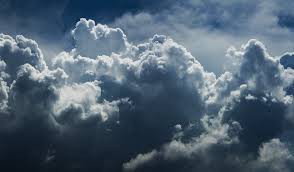 There are three doors on the western entrance of Chartres. Together they form what is known as the Royal Portal. The three doors are symbolic of the Holy Trinity; God, Jesus, and the Holy Spirit. This symbolism is recurrent in Gothic architecture. The door jamb sculptures are slender, columnar figures. They depict Old Testament kings and queens. The royalty is frontal, with their arms on a vertical plane, their halos flat, and their feet slanting downward. The cathedral portal in contrast to the Roman arch highlights the symbolic connection between the interior of the church and Jerusalem. The right portal depicts scenes of Christ’s Nativity and childhood on a double lintel. On the tympanum Mary and Christ sit on a throne surrounded by the Seven Liberal Arts which are depicted in the archivolts. The Liberal Arts are represented in the trivium (grammar, rhetoric, and dialectic), and the quadrivium (arithmetic, geometry, astronomy, and music.) This shows the importance Christians placed on knowledge in relation to becoming one with God. Scenes of the Ascension are depicted on the northern tympanum. The archivolts contain zodiac signs. The central portal contains an apocalyptic vision of Saint John the Divine. On the tympanum Christ is seated surrounded by an oval mandorla and the four apocalyptic symbols of the Evangelists. Christ is only slightly larger then St. Mark and St. Luke; however, his superiority is still maintained. Underneath the tympanum the 12 apostles are arranged in four groups of three. At both ends of the lintel a single prophet stands holding a scroll which is presumably the New Testament. Overall, the Royal Portal of Chartres offers the viewer the entirety of Christian history. The beginning and the end of Christ’s life is placed at the right and left doors, in keeping with Western traditions of reading. The Old Testament kings and queens on the door jambs are the symbolic ancestors of Mary and Jesus.
There are three doors on the western entrance of Chartres. Together they form what is known as the Royal Portal. The three doors are symbolic of the Holy Trinity; God, Jesus, and the Holy Spirit. This symbolism is recurrent in Gothic architecture. The door jamb sculptures are slender, columnar figures. They depict Old Testament kings and queens. The royalty is frontal, with their arms on a vertical plane, their halos flat, and their feet slanting downward. The cathedral portal in contrast to the Roman arch highlights the symbolic connection between the interior of the church and Jerusalem. The right portal depicts scenes of Christ’s Nativity and childhood on a double lintel. On the tympanum Mary and Christ sit on a throne surrounded by the Seven Liberal Arts which are depicted in the archivolts. The Liberal Arts are represented in the trivium (grammar, rhetoric, and dialectic), and the quadrivium (arithmetic, geometry, astronomy, and music.) This shows the importance Christians placed on knowledge in relation to becoming one with God. Scenes of the Ascension are depicted on the northern tympanum. The archivolts contain zodiac signs. The central portal contains an apocalyptic vision of Saint John the Divine. On the tympanum Christ is seated surrounded by an oval mandorla and the four apocalyptic symbols of the Evangelists. Christ is only slightly larger then St. Mark and St. Luke; however, his superiority is still maintained. Underneath the tympanum the 12 apostles are arranged in four groups of three. At both ends of the lintel a single prophet stands holding a scroll which is presumably the New Testament. Overall, the Royal Portal of Chartres offers the viewer the entirety of Christian history. The beginning and the end of Christ’s life is placed at the right and left doors, in keeping with Western traditions of reading. The Old Testament kings and queens on the door jambs are the symbolic ancestors of Mary and Jesus.
Monthly Archives: October 2014
Christ in Majesty
The Christ in Majesty is the frontispiece from the Vivian Bible, an illuminated manuscript. It portrays Christ and the four evangelists; Matthew, Mark, Luke, and John writing the new testament. Christ rests in the center of the piece, floating in a spherical shape. Christ stands weightlessly on a globe which is meant to represent the Earth. He is frontal and his proportion is more reminiscent of early Egyptian style than Classical. He is clothed in a golden robe and has a golden halo surrounding him. The use of the color gold suggest importance and spirituality.
He is surrounded by the icons of the evangelists; the bull, eagle, lion, and angel. All three also have golden halos surrounding their heads. These also suggest holiness as well as affiliation with Christ. On the outer edges of the piece the four evangelists are represented in human form bent over manuscripts. The lower left hand evangelist cranes his head unnaturally upwards. One can surmise that he is looking to the heavens, to God, for inspiration. All are dressed in lavish garments and sit upon ornate thrones. It can be assumed that these are meant to evoke the rewards they will gain after death for their holy work.
The entire piece is dominated by three colors; gold, red, and variants of gray. These colors evoke both a mystical yet agitated quality. The swirling grey colors behind Christ seem to be a gathering storm, showing the powerful and potentially destructive powers of God. The gold coloring and leafing show the reverence the monks held for their God and his servants. Gold, a color often used for royalty, shows that Christ is the king of heaven and earth. Red adds to the frenzied feeling of the manuscript.
All the figures are connected by swirling shapes and colors. This shows the direct connection between the evangelists and Christ. While they are the ones writing the gospels it is apparent that Christ, at the center of the piece, is dictating the content.

